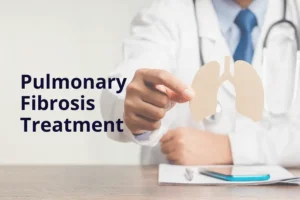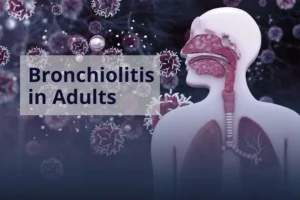
Understanding Pulmonary Fibrosis Treatment: A Complete Guide for Families
As a chest specialist practising in Nagpur for over twelve years, I have had the privilege of helping hundreds of families understand pulmonary fibrosis treatment.
Namaste! I’m Dr. Sameer Lote, and I’ve been treating respiratory conditions for over 15 years. Just last week, I had an experience that perfectly captures why I’m writing this for you today.
I was treating two patients on the same day – little Kavya, a 9-year-old who was struggling to breathe after playing in her school’s dusty playground, and Rajesh uncle, a 58-year-old retired teacher who could barely climb one flight of stairs without gasping for air.
Now, here’s what caught my attention – both families were asking me almost identical questions about persistent coughing and breathing troubles. Yet, the conditions affecting these two patients were completely different.
What really struck me was the contrast in their stories. Kavya’s mother kept telling me, “Doctor, she was absolutely fine until this coughing started last month. Sometimes she breathes normally, sometimes she cannot catch her breath at all.”
Meanwhile, Rajesh uncle’s son was explaining, “Papa has been getting worse gradually. His morning cough has been there for years, and now even walking to the market leaves him breathless.”
This made me realise how crucial it is for you and your family to understand what is the difference between asthma and COPD. While both conditions cause breathing problems and naturally worry entire households, they are fundamentally different diseases that need completely different approaches to treatment and management.
So today, I want to share what I’ve learned from treating thousands of patients like Kavya and Rajesh uncle. My goal? To help you better understand whether your family member needs immediate intervention or long-term management, and most importantly, when to seek the right kind of medical help.
Before we dive into the differences, let me share something that might surprise you. In my years of practice across Nagpur, I’ve observed that more than one-third of respiratory condition diagnoses are initially incorrect when proper lung function tests aren’t conducted. Now, I’m not telling you this to worry you, but rather to emphasise why seeking proper medical evaluation is so important.
You see, the confusion happens because both conditions present with remarkably similar symptoms. Without a professional assessment, it becomes challenging to distinguish between them. This is exactly why understanding these differences is important.
Let me break this down for you in a way that makes sense.

Think of asthma as your airways becoming overly sensitive to things around you – kind of like how some people in your family might react strongly to certain foods while others can eat them without any problems. When I explain asthma to families like yours, I always start with the most encouraging news: the airway narrowing in asthma is usually reversible.
What does this mean for you? With the right asthma treatment and some lifestyle adjustments, we can often restore normal breathing function and help your loved one lead a completely normal life. I’ve seen children go from struggling to breathe to playing cricket with their friends, and adults return to their daily routines without any breathing concerns.
Now, COPD presents us with a different scenario entirely. This condition primarily affects adults above 40 years of age and involves progressive, non-reversible damage to the lung structure. Think of it this way – the lungs gradually lose their elasticity and become stiff, while mucus production increases significantly over time.
Here’s the key difference that matters to your family: unlike asthma, COPD represents permanent changes to the lung tissue that cannot be fully reversed. However, and this is important, we can certainly slow its progression and manage symptoms effectively. So while the approach is different, there’s still plenty of hope for maintaining a good quality of life.

Understanding when these conditions usually develop can help you recognise what you might be dealing with in your family.
In my experience treating young patients, asthma frequently shows up during childhood years. I’ve noticed that children from families with a history of allergies or asthma are more likely to develop this condition. But here’s something you should know – asthma doesn’t only affect children. I’ve also treated many patients who develop asthma during their adult years, often triggered by occupational exposures or environmental changes.
COPD typically makes its appearance in individuals above 40 years of age. What makes this tricky for families like yours is that the progression is gradual – often taking years or even decades before you notice significant symptoms. This is exactly why many families don’t recognise the early signs until the condition has progressed considerably.
This timing difference is actually one of the first clues when I’m trying to help families understand what is the difference between asthma and COPD.
Now, let’s talk about what might be causing these problems in your home environment. This is where understanding your specific situation becomes really important.
Based on what I see in my clinic every day, here are the asthma triggers that are particularly common in Indian households:
Family History Connection: If there’s a family history of asthma or allergic conditions, you’re dealing with an inherited tendency for airways to react strongly to triggers. This isn’t anyone’s fault – it’s simply genetics.
Environmental Factors in Your Daily Life: You’ll probably recognise some of these from your own experience – dust accumulation during construction activities (extremely common in developing areas of Nagpur), indoor allergens like dust mites in cotton mattresses and pillows, pet dander from dogs and cats kept in homes, mold growth during our monsoon seasons, and pollen from neem, gulmohar, and other common trees around us.
Then there are the indoor factors – smoke from cooking with traditional chulhas or poor ventilation, and strong incense and camphor used during daily prayers. Even viral infections, particularly common during our seasonal changes, can trigger asthma episodes.
When it comes to COPD, the picture is somewhat different, and understanding these risk factors could be crucial for your family’s long-term health.
The Primary Culprit – Tobacco: The most significant risk factor I observe is cigarette smoking, including both direct smoking and exposure to secondhand smoke from family members. If anyone in your household smokes, this is the single most important thing to address.
Environmental Exposures Specific to Our Region: Living in India, and particularly in cities like Nagpur, exposes us to unique challenges – air pollution from vehicle emissions and industrial activities, smoke from burning crop stubble (especially relevant if you have connections to North Indian plains), indoor air pollution from cooking with biomass fuels in rural areas, occupational dust exposure in industries like cotton mills, construction, and mining, and poor ventilation in traditional kitchens leading to chronic smoke exposure.
Understanding these triggers helps us move to the next crucial piece of the puzzle – recognising how these conditions actually show up in daily life.
This is where things get really practical for you. Let me describe the patterns I see, and you’ll probably recognise some of these in your own family’s experience.
When I evaluate patients with asthma, families typically describe something that might sound familiar to you:
Episodes that come in attacks, ranging from mild to severe, but here’s the key – complete normalcy between episodes. I’ve seen children who struggle to breathe one day and then play cricket without any difficulty the next day. There’s a daily variation in symptoms too – some days are completely normal, while others are challenging.
You might notice wheezing sounds, particularly at night or early morning, along with a dry cough or cough with clear, thin mucus. Often, symptoms worsen during specific seasons or after exposure to known triggers.
COPD patients and their families describe a very different experience:
Persistent, constant symptoms that remain present daily, with progressive worsening over months and years. Unlike asthma’s episodic nature, COPD involves a productive cough with thick, colored mucus – often yellow or green. There’s continuous shortness of breath that limits daily activities, difficulty climbing stairs or walking moderate distances, and symptoms that persist throughout the year with gradual deterioration.
Seeing these different patterns helps explain why the medical approach needs to be different, too.
I know you might not need all the technical details, but understanding a bit about what’s happening inside can help you make better decisions for your family.
In asthma, your body produces a specific type of inflammatory response involving cells that are typically associated with allergic reactions. This is actually good news because it means anti-inflammatory medications are highly effective in controlling asthma symptoms and preventing attacks.
COPD involves different inflammatory cells, primarily ones that are typically involved in fighting infections. The inflammation in COPD causes structural damage to lung tissue that cannot be reversed, though we can prevent further deterioration.
This scientific difference is exactly why the same medication won’t work equally well for both conditions, and why getting the right diagnosis matters so much for your family.
Now, here’s something that might surprise you. In my clinical practice, I’ve observed that approximately 30% of patients may exhibit features of both conditions. We call this Asthma-COPD Overlap Syndrome.
This typically happens in adults with childhood asthma who begin tobacco smoking, individuals with persistent childhood asthma who develop COPD later in life, or long-term COPD patients whose lung function patterns change over time.
Patients with overlap typically experience more severe symptoms than those with either condition alone, with more frequent and intense episodes requiring medical attention. This is why professional evaluation becomes even more critical.
Understanding what will happen during your consultation can help you prepare better and get the most out of your visit. I try to understand your complete family history, history of allergies, lifestyle, etc, with a specific attention to symptom patterns, timings, and triggers.
Thereafter, I conduct a physical examination to hear your lung sounds and a lung function test using spirometry. If needed, I ask you to get X-rays, allergy tests, and blood tests done.
Once we know what we’re dealing with, the treatment approach becomes much clearer, and this is where understanding the difference really pays off for your family.
For asthma, I’m ambitious with our treatment goals – we aim to achieve complete symptom control and prevent future episodes. This isn’t wishful thinking; it’s genuinely achievable for most patients.
For COPD, our focus shifts to reducing daily symptoms and slowing disease progression. While we can’t reverse the changes, we can significantly improve the quality of life.
The key difference here is that asthma treatment aims for complete control, while COPD treatment focuses on symptom management and slowing progression. Both approaches can be highly successful when tailored to your specific situation.
Now let’s talk about what you can actually do at home to help your family member, regardless of which condition they have.

If your family member has asthma, focus on identifying and avoiding personal triggers through careful observation, maintaining an asthma action plan for managing episodes, regular peak flow monitoring at home as recommended, and taking seasonal precautions during high pollen periods.
For COPD, emphasise participation in pulmonary rehabilitation exercises, learning energy conservation techniques for daily activities, maintaining proper nutrition to support respiratory muscle function, and planning activities during cooler parts of the day when possible.
These lifestyle modifications work hand-in-hand with medical treatment to give your family member the best possible outcome.
As someone who has treated respiratory emergencies, I want you to know exactly when to seek immediate medical care. You should head to the hospital immediately if you observe:

Don’t hesitate in these situations – it’s always better to be safe when it comes to breathing problems.
When you come to see me, here are the questions that will help you get the most out of our consultation:
Feel free to ask anything else that’s on your mind – that’s what I’m here for.
While your family physician plays a vital role in your overall health, respiratory conditions often benefit from specialised evaluation and treatment. As a pulmonologist, I can provide advanced diagnostic testing and interpretation, access to specialised treatment options, experience managing complex respiratory cases, coordination with other specialists when required, and long-term monitoring and adjustment of treatment plans.
This specialised approach often makes the difference between just managing symptoms and achieving optimal control of the condition.
If you’re concerned about respiratory symptoms in any family member, take immediate action by keeping a detailed symptom diary and seeking proper medical evaluation with lung function testing – early diagnosis is crucial for better outcomes.
Asthma is typically a reversible childhood condition responding well to anti-inflammatory treatment, while COPD is a progressive disease affecting adults over 40, often linked to smoking or environmental exposures.
Though some may have features of both conditions, professional evaluation remains essential. Respiratory treatment is an investment in your family’s long-term health, with many affordable generic medications available that actually reduce healthcare costs by preventing emergencies.
Both asthma and COPD are highly manageable conditions – with accurate diagnosis, proper medication, and lifestyle modifications, your family members can maintain an excellent quality of life and continue fulfilling their responsibilities. Your family’s health is too important to leave to guesswork, so let’s work together to get you the answers and treatment you need.

As a chest specialist practising in Nagpur for over twelve years, I have had the privilege of helping hundreds of families understand pulmonary fibrosis treatment.

Are You Experiencing Unexplained Breathing Difficulties That Just Will Not Go Away? A few weeks back, I had an interesting case. He was a man

It is 3:17 AM. You are staring at the ceiling again, your mind racing between tomorrow’s chemotherapy session for breast cancer and your daughter’s upcoming

“Doctor sahib, my son has been coughing for three weeks now. We have tried everything – ginger tea, tulsi, and even visited the local doctor

Namaste! I’m Dr. Sameer Lote, and I’ve been treating respiratory conditions for over 15 years. Just last week, I had an experience that perfectly captures